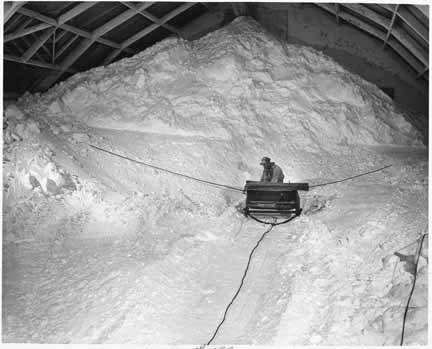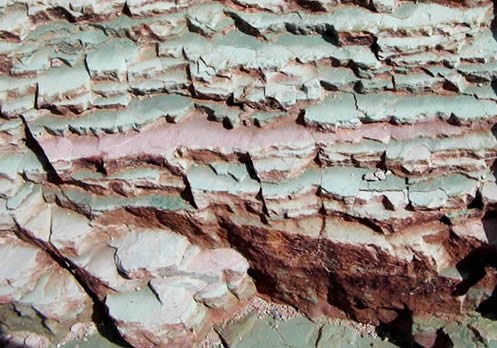
3. IC Potash (TSXV:ICP)
All Potash is not created equal. The most common form, called Muriate of Potash, or MOP, accounts for about 95% of all potash fertilizers used worldwide.
Toronto’s IC Potash, however, is concerned with the more rare and expensive Sulphate of Potash, or SOP. SOP is slightly lower in potassium and is used in crops such as tobacco or pineapples, which are more inclined to fertilizer burn. SOP, which is sometimes referred to as “premium” potash, is aptly named because it trades at a premium; the price is normally 20-30% higher than regular potash.
With their Ochoa project in New Mexico, a land position that covers more than 100,000 acres, IC Potash is focused on becoming the world’s lowest cost producer of SOP. IC believes they are sitting on a resource of over a billion tonnes that is, as the company describes, “an average of 5.7 feet thick, and has an 83% grade, a remarkable grade for any resource.”
Shares of IC Potash raced from $.85 cents on December 20th of last year to over $1.70 as the potential of the Ochoa project became verified. The biggest one day leap happened January 5th after an updated preliminary economic assessment by Gustavson Associates of Lakewood, Colorado estimated the net present value of the Ochoa project at $1.4-billion. On March 17th, the company completed a $20 million financing at $1.60 per share. Going forward, IC Potash said their capital cost estimates to develop their mine are $662-million, and projected production cost of SOP will be $164 per tonne.
Investors bullish on IC Potash believe these profit margins will continue to positively affect the company’s share price. Compass Minerals (NYSE: CMP), through its wholly owned subsidiary Great Salt Lake Minerals, is the leading producer of sulphate of potash in North America. In March, that company reported it was selling SOP for roughly $900 per short tonne, up $50 from the company’s December 2010 price.
Equity analyst are paying attention to rising prices, but some perceive a shortage of potash juniors in a sector where properties are scarce and mines can take years to develop. Robert Winslow, an analyst with Wellington West, said IC Potash is “set to benefit from a resurgence in demand.” Because, prices for “premium” potash are still trending up and the acquisition of junior Potash One made remaining Potash juniors more valuable compelling him to “…re-rate all the junior potash stocks we cover with a positive bias.” Winslow recently raised his price target to $2.40 and “sees potential for the stock to trade above $8 by 2015.”
4. Western Potash (TSXV:WPX)
Western Potash, as its name suggests, is developing a potash project in Saskatchewan, the sparsely populated province in Western Canada that produces about a third of the world’s supply of the stuff. The company’s Milestone Potash Project is located in the central part of the province, about 35 kilometres southeast of Regina.
Saskatchewan potash deposits are deep, typically a kilometre or more underground. For deep deposits, a range of factors must be considered over and above the pure economics associated with building a processing facility. Historically, underground mining was not considered feasible if a deposit was deeper than 1100m below surface. Western Potash’s deposit is way underground; the potash rich ore is located at a depth of 1,700 meters.
So what’s the solution for Western Potash? Solution mining. Solution mining is a process used to extract minerals using an aqueous leaching solution. A liquid is pumped into a deposit and makes contact with the ore. The resulting solution is then pumped to the surface and processed. The process was discovered in the 1960’s and is only now being used to mine salts such as potash, copper and uranium. Australia’s Beverley Uranium Mine is the first operating solution, or in-situ mine in the world.
Solution mining can be tricky business. Certain temperature conditions, for example, need to be available in order for solution mining to work. A temperature greater than 50 degrees Celsius is generally required, implying a depth of at least 1,450 meters. Solution mining begins by undercutting the mineralized zone by dissolving an initial cavern below the seam of interest within the potash beds. This is followed by dissolving the salt and potash upward and through the mineralized beds while utilizing a “ceiling cap”. The oil or gas ceiling cap inhibits vertical cavern growth until a large area is undermined. Mining then progresses vertically by raising the cap and dissolving mineralized portions of the roof. The minerals are then recovered from the saturated fluid by recrystallization. After mining the empty caverns may be useful for underground storage, and are sometimes more valuable than the minerals produced during cavern development.
Western Potash management believes its potash properties are top notch candidates for solution-mining. A NI-43-101 resource estimate determined the Milestone Project had 41 million tonnes of Measured Resource, 133 million tonnes of Indicated Resource, and 560 million tonnes of Inferred Resource with an average grade of around 30% KCl. The resource estimate, prepared by Agapito Associates, suggests an annual potash production rate of 3 million tonnes for well over forty years.
But building a potash mine is not an inexpensive proposition, the price tag associated with Western’s project is estimated at $2.5 billion. To that end, the company recently completed a $20 unit financing at $1.10 and, with the proceeds, has initiated their feasibility study for Milestone Project, engaging engineering consultants AMEC Americas. The MiningFeeds.com connected with Western Potash President and CEO Patricio Varas for an exclusive interview – CLICK HERE.
5. Amazon Mining (TSXV: AMZ)
The name Amazon Mining will tell you a little about the only Canadian listed potash junior operating in Brazil, but don’t get too attached to it. In the second quarter of this year Amazon, which is currently developing the Cerrado Verde potash project in Brazil, plans to change its name to Verde Potash. And with the year the company has had, why not?
Shares of Amazon rocketed from just over a dollar midway through 2010 to a high of $8.60 on January 21st of this year. The company has other assets, but it’s potash, and the unique opportunity the company has carved out in Brazil, that has investors bidding up the shares of the company.

Amazon’s potash project involves a little technology. The company plans on utilizing a relatively new extraction process that heats Verdete, or green slate, to almost 1,100 degrees Celsius to extract the potash. This process results in a new fertilizer, ThermoPotash, that the company believes will be more suited to the needs of the Brazilian marketplace. Brazilian soil is much more acidic than soil in other parts of the world, and the problem has been compounded by the agricultural use of potassium chloride. And potassium chloride, the fertilizer produced in Canadian potash mines, also washes away too easily in Brazil’s heavy tropical rains.
Brazil, which is the largest coffee and sugar cane producer in the world, is the world’s fourth largest user of potash and and the second largest importer. The country produces less than ten per cent of its annual needs. The country is aiming to reduce its import needs to 60% over the next five years.
Things are moving ahead quickly at Cerrado Verde. On March 8, 2010 Amazon received an initial National Instrument NI 43-101 compliant inferred mineral resource estimation of 105 million tonnes at 10.3% K20 Inferred Resource for its Cerrado Verde potash project. The company is currently undertaking a drill program with the hopes of expanding their potash resource. The good news kept rolling for Amazon when a preliminary economic assessment showed the project may have an an estimated life of a hundred years, more than double previous estimates. The assessment also showed that project capital costs are estimated to be between $150 and $250 million which, by international standards, is considered quite modest.
For 5 Potash Stocks to Watch in 2011 – Part 1 – CLICK HERE.



 Follow us on Twitter
Follow us on Twitter Become our facebook fan
Become our facebook fan











Comments are closed.